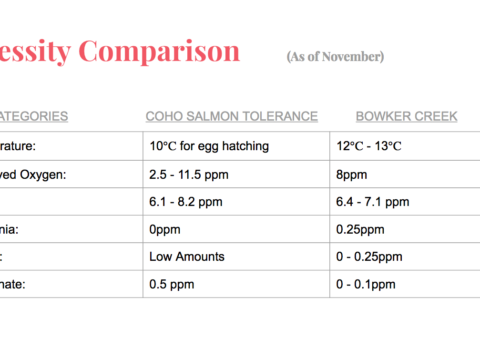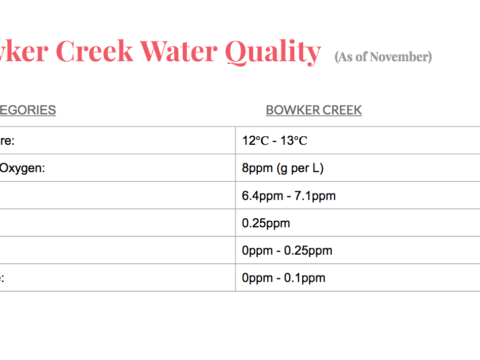
1In 1 playlists
what exactly are we talking about? our driving question is "How do native plants effect the ecosystem?" Why are they so important to not only us but to many animals too? why do we depend on them so heavily, and what benefits do they give to the whole ecosystem as a whole?

1In 1 playlists
Symbiotic Relationship between Native and Invasive Plants invasive plants affect the health and population of native plants and benefit the environment by keeping native plant's numbers in control by feeding off of native plants. (creeping buttercup: ranunculus repens)
invasive plants affect the health and population of native plants and benefit the environment by keeping native plant's numbers in control by feeding off of native plants. (creeping buttercup: ranunculus repens)

1In 1 playlists
native plants of BC (also in Bowker creek) maple bigleaf, sword fern, snowberry and salal 




1In 1 playlists

By OB27
Above you will see the tolerance levels of the Coho Salmon compared to Bowker Creek's levels. The levels above are the maximum amount of levels that a Coho Salmon can tolerate.

1In 1 playlists
By OB22
The idea to restore Bowker Creek began to bloom several years ago.

By OB27
If and when the Coho Salmon return, we hope that the millions eggs they lay will not be harmed so the Salmon community can thrive once more in Bowker Creek.

By OB27
The categories in the photo are the essential conditions and molecular substances needed in a thriving aquatic environment. To the right of them are the levels and amounts of these substances Bowker Creek has. (ppm = parts per million)
